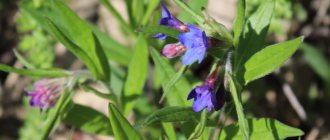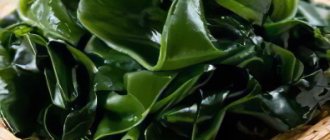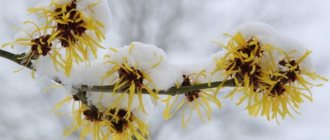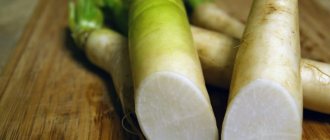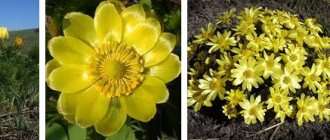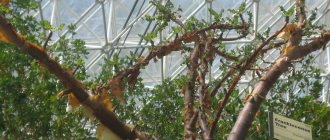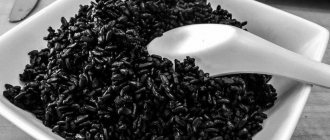Chemical composition
In the complex and rich composition of Dioscorea, the following are of particular value:
- Saponins. Substances that remove harmful cholesterol from the body. They cleanse blood vessels from atherosclerotic plaques that form on the walls. Dissolve microthrombi even in the smallest vessels. Remove lipoid deposits from the liver and cleanse it.
- Glycosides. Improves heart function.
- Phytoestrogens. Their structure is similar to female hormones and can normalize their production. Prevents the leaching of calcium from bones. Helps slow down skin aging by restoring metabolic processes in it.
It also contains a lot of starch, chromium, selenium and fat-like substances. Most of the beneficial substances are located in the root of Dioscorea.
Rhizomes with Diascorea roots
Pharmacological properties
Preparations with dioscorea have high antisclerotic properties. They activate the activity of the heart and brain, improve hemodynamics.
This ability is based on the action of saponins. They help expand the amplitude of heart contractions, deepen breathing, increase bile production and diuresis, and normalize the motor function of the stomach.
The pharmacological properties of Dioscorea do not end there. Preparations with the plant have shown their effectiveness in improving general condition, combating fatigue, sleep disorders and increased irritability. They speed up recovery after heart attack and stroke.
Indications for use
The main disease for which dioscorea is prescribed is atherosclerosis of the vessels of the brain and other organs.
Preparations with dioscorea are prescribed for:
- disorders of the adrenal glands;
- to develop immunity;
- vegetative-vascular dystonia,
- arthritis,
- inflammation of the trigeminal nerve,
- headache, vascular etiology,
- cataracts,
- angina pectoris to reduce the frequency of attacks,
- tachycardia,
- diabetes mellitus to maintain normal prothrombin index values,
- problems with potency.
Dioscorea for the treatment of cerebral atherosclerosis
Dioscorea has especially proven itself in therapy in the elderly.
It has a beneficial effect on the heart, cleanses blood vessels, increases their elasticity, and helps normalize hormonal levels. When taken, memory becomes sharper, vision and hearing improve.
Contraindications
The use of drugs containing Dioscorea leads to cure for a large list of diseases. Contraindications are not so extensive, but, like any herbal preparation, they still exist.
- Stomach ulcer, gastritis. When taking the herb, the secretion of the digestive glands increases, which causes acidity to increase.
- Hypotension and bradycardia. Dioscorea dilates blood vessels, reduces blood pressure and pulse. In people with low blood pressure it provokes a hypotensive crisis.
- Stroke. On the one hand, Dioscorea helps recovery after a stroke. On the other hand, due to the possible flow of blood into some areas of the brain, new hemorrhage may occur.
- Reduced blood clotting. The plant thins the blood, which is dangerous with this feature.
- Allergy to the plant. Sometimes, after taking the drug, a patient develops a rash, itching, increased sweating, and in some cases, stomach upset may occur. These are symptoms of an allergic reaction of the body to the plant material of Dioscorea.
- Pregnancy. Dioscorea causes uterine spasms, which threatens miscarriage.
- Breastfeeding. The composition of milk changes and its production decreases.
- Children's age, up to 14 years.
Dioscorea Caucasica, when taken on an empty stomach, irritates the mucous membranes of the intestines and stomach, so intestinal disorders may occur.
What does Caucasian Dioscorea look like: photo and description of the plant
Dioscorea Caucasica can reach 4 m in height
Dioscorea Caucasica is a perennial herbaceous vine with a long thick rhizome, climbing stem and large heart-shaped leaves. The plant begins flowering in late spring. During this period, yellow-greenish inflorescences appear in Dioscorea. The fruits of the plant ripen in August-September and are small boxes containing seeds inside.
For medicinal purposes, Dioscorea Caucasica is most often used, and Dioscorea japonica and Nipponica are occasionally used. All these varieties practically do not differ from each other in action.
Dioscorea can be bought at the pharmacy
The underground part of the plant is used to make the products. Raw materials for making your own medicines can be bought at the pharmacy. Dioscorea is not included in the State Register of Medicines of the Russian Federation, but previously it was still used not only in folk, but also in official medicine. Drugs for atherosclerosis such as Diosponin and Polysponin were a dry extract of Dioscorea. They were no longer produced due to a lack of raw materials. At the same time, biologically active food additives are still produced on the basis of Dioscorea.
Dietary supplements are made on the basis of Dioscorea
Popular types
Almost all species of the Dioscoreaceae family have medicinal properties.
Dioscorea japonica
Dioscorea japonica grows in the southern part of the Far East. It also has a second name - wild yam. Rhizomes are harvested from April until the onset of frost. They contain a lot of steroid glycosides that regulate blood cholesterol levels.
Preparations with Dioscorea japonica are prescribed to prevent and treat atherosclerosis. When taken, the thickness and clotting of blood decreases.
Wild yam has pronounced abilities to relieve spasms and is effective for dysmenorrhea and menstrual cramps. Relieves pain during gynecological operations and after childbirth.
Dioscorea japonica
Dioscorea opposite
The species Dioscorea opposite is common in Japan and China. It has an angular, twisted stem up to 9 m long and opposite leaves.
Harvesting of roots takes place in the fall. They are used to prepare drugs for the treatment of diseases of the kidneys, spleen, and stomach. A tincture of Dioscorea oppositeis leaves treats dry asthmatic cough.
Dioscorea nipponensis
Dioscorea nipponensis is found in East Asia. It can be recognized by its wide leaves and bare stem.
Rhizomes harvested in early autumn are used to prepare medicines to lower blood pressure. They have a diuretic, anti-sclerotic and choleretic effect, and reduce blood clotting.
Extract from the rhizome of Dioscorea Nipponum "Polysponin" can be found in pharmacies. It is prescribed for diseases of the liver and blood vessels, atherosclerosis and high blood pressure.
Dioscorea nipponensis
Dioscorea ivory
Dioscorea ivory is not a medicinal plant, but is valued for its unusual appearance. It grows in South Africa.
Its uniqueness lies in its above-ground spherical tuber (caudex), which reaches a gigantic size - up to 3 m in height, 1 m in width and weighs 400 kg.
The tuber is covered with corky growths, which is why it looks like a turtle shell. Its pulp is edible and tastes like a turnip.
Dioscorea ivory
Dioscorea hairy
Dioscorea hairy has a knotty rhizome with branching shoots, pubescent leaves and small pale flowers.
The medicinal part of the plant is the rhizome. They are used to make contraceptives, ointments for eczema, drugs to relieve spasms and convulsions, treat cystitis and other diseases of the urinary system.
Dioscorea hairy
Description of Dioscorea Caucasian
A perennial herbaceous vine, the climbing stems of which reach a height of 4 m. The remaining stems grow on the main shoot, which makes up the main axis (under natural conditions, only 1-2 per year). Dormant buds and the base of the stems are located in the upper part of the rhizome. The number of their groups makes it possible to determine the approximate age of the plant. The rhizome is yellowish-brown, thick, long, branched, horizontal, with numerous hard roots extending from it. Over the years, the root system of Caucasian Dioscorea can extend more than 1 m into the soil. The life span of the plant is over 40 years.
The leaves are petiolate, 6-15 cm in length, bright green, broadly ovate in outline, with a heart-shaped base, slightly elongated, pointed at the end, the lower surface of the leaf blade is pubescent; the margin is slightly notched, with 9–12 arcuate veins. The arrangement of leaves in the lower part of the shoot is whorled, in the upper part it is alternate. The plant is dioecious. The flowers are very small (up to 4 mm in diameter), inconspicuous, yellowish-greenish, with a simple perianth consisting of 6 petals, unisexual: males are collected in axillary spikes, females - in racemes. Dioscorea blooms during May - June. The fruit is a three-lobed triangular capsule with a diameter of 2–3.5 cm with 3 membranous wings, containing flat seeds with an elongated, thin membranous wing-like outgrowth, ensuring their volatility. The fruits of Dioscorea ripen in July - September. The plant reproduces vegetatively and by seeds.
Dioscorea Caucasica is a relict plant, and the area where it can be found in natural conditions is very limited. It grows at an altitude of 400–1500 m above sea level in the territory of Abkhazia and in the Adler region of the Krasnodar Territory, mainly in sparse oak or oak-hornbeam forests, in thickets of bushes, in clearings, edges and clearings, on rock ledges, southern rocky slopes, in river valleys, as well as in the mountains, clinging to unpaved slopes with a powerful rhizome. Found on neutral, rocky and clayey soils. The total distribution area occupies about 15,000 hectares, of which a much smaller part is of commercial importance.
In 1979, Dioscorea Caucasica was listed in the Red Book as an endangered plant, and therefore a decision was made on the need for its cultivation. However, the changes that occurred after the collapse of the USSR into separate states have led to the fact that at the moment there is no state industrial cultivation of Dioscorea. Industrial production of Caucasian Dioscorea raw materials is undertaken only by small private enterprises.
Drug recipes
Dioscorea is included in the list of medicinal herbs. The leaves are occasionally used to prepare dosage forms; the rhizome is mainly used. Tinctures, decoctions and powders are made with it. For each type of disease, recipes for medications containing Dioscorea have been developed and tested.
For atherosclerosis
Treatment is carried out with a honey mixture. Recommended intake: 3 times a day, 1 teaspoon according to the scheme: 10 days of intake - a week break - 10 days of intake. Duration of treatment is 3 months.
Recipe:
- Pour 5 grams of powdered root into 1/2 cup of honey.
- Mix the mixture thoroughly.
- You can take it immediately.
For inflammation
The alcohol form of the medicine will help to cope even with inflammatory processes of varying severity.
The tincture is prepared from:
- 50 grams of root,
- 0.5 l of vodka.
Finely chopped dioscorea root is poured with vodka and infused for 1 month. The mixture must be shaken. Then it is filtered. Dilute 30-60 drops in water and drink 3 times a day.
Treatment takes 3-12 months, depending on the type of disease.
From female diseases
In case of failure of the menstrual cycle or complications of the condition during menopause, prepare a decoction of 1 teaspoon of chopped dioscorea roots and 2 glasses of water.
- Boil the raw materials for 10 minutes in a water bath.
- Leave for 30 minutes in a thermos.
- Filter.
Dose for 1 dose - 1 tablespoon. Regimen - 3 times a day.
The duration of treatment is determined by the doctor.
For potency
Clover grass with dioscorea roots, infused with vodka, will solve problems with potency.
Recipe:
- Grind 50 grams of dioscorea rhizomes.
- Fill a 3-liter jar to the top with clover flowers.
- Pour the crushed roots into the jar with the flowers.
- Pour 2.5 liters of vodka into a jar with raw materials so that the clover is completely covered with it.
- Leave for 30 days, shaking. Vodka needs to be added to the original volume.
- Strain.
- Leave for 7 days.
The course of treatment is 1-2 months, 1 teaspoon 2-3 times a day. Clover is recommended to be collected in the morning.
Infusion of clover herb with dioscorea roots
For hypertension
Treatment with medications at the initial stage of hypertension is complemented by tea with Dioscorea. If you drink it daily during breakfast, sleep will normalize, chronic fatigue will go away, and vascular tone will decrease.
To prepare you will need:
- 1.2 teaspoons of crushed roots;
- 1 teaspoon of green tea;
- honey - to taste;
- boiling water.
The medicinal tea is prepared as follows:
- Mix green tea and dioscorea root;
- Pour 1 cup boiling water;
- To cover with a lid;
- Leave for 7-10 minutes;
- Strain;
- Add honey.
The tea is ready to drink.
For each reception, a new portion of tea is prepared.
For obesity
The anti-obesity effect of Dioscorea is based on the plant's ability to enhance metabolism. Dioscorea root is part of a collection of medicinal herbs from which an infusion is prepared.
COLLECTION AND PREPARATION
Rhizomes of Dioscorea Caucasica with roots are used as medicinal raw materials. Rhizomes are collected throughout the growing season, from late April to late autumn, but it is advisable not to disturb the rhizome until the seeds are ripe.
The collected rhizomes are thoroughly cleaned of soil, remains of stems, areas affected by rot, cut into thin pieces 2-4 mm thick and 5-7 cm long and dried in a dark place, spread out in a thin layer, or in dryers.
Store finished raw materials in bags in a dry place, protected from light, at a temperature of 0° to 20° C.
The shelf life of dry rhizomes of Caucasian Dioscorea is 2-3 years.
Use in folk medicine
Dioscorea is popularly valued as a powerful remedy for alcohol and drug addiction. The medicinal properties of dioscorea are also used in the treatment of gout, arthritis, and many other diseases.
Dioscorea root
In folk medicine, Dioscorea root is valued as a “storehouse of useful substances”; it contains 25% saponins and other medicinal substances.
Decoctions from the root are taken to normalize the functioning of the ovaries, adrenal glands, pituitary gland, and externally for dermatological diseases.
The rhizomes of Dioscorea Caucasica contain up to 25% steroidal glycosides (saponins)
Dioscorea tincture
The alcohol form of the drug is given to patients with epilepsy to reduce the frequency and severity of attacks. Dioscorea root infused with vodka has immunomodulatory properties. It is taken by weakened patients and in severe forms of various diseases.
There is an opinion about the ability of dioscorea rhizomes to heal cancer. But it has no official confirmation.
Dioscorea tea
Dioscorea tea works well for the prevention of hypertension and atherosclerosis. To prepare it, use a mixture of 70% green tea and 30% crushed rhizomes.
Dioscorea with honey
The powder of dioscorea rhizomes in combination with honey will relieve atherosclerosis, strengthen the nervous system, and support heart function.
For medicinal purposes, take 0.2 grams of powder (at the tip of a knife), seizing it with 1 tbsp. spoon of honey. Honey can be diluted in warm water. Take 10 days 3 times a day 30 minutes after meals.
The healing properties of Dioscorea are strong and quite varied. The plant has many indications. The plant is recognized as a medicinal drug and successfully replaces chemical therapy.
X
Cream
Dioscorea is a unique plant that is included in some birth control products, and creams that contain it help cure eczema. Decoctions and infusions are the best antirheumatic, antispasmodic, antipyretic, and anti-inflammatory drugs. This plant is a godsend for women during the premenstrual period. Medicines prepared on its basis dilate blood vessels, relieve cramps and spasms.
Dioscorea is rich in phytoestrogens, including diosgenin. If infusions and decoctions from the root are used during menopause, you can protect yourself from diseases such as osteoporosis, as well as improve the functioning of the sex gland. With the help of drugs that include this plant, you can cure cystitis and other inflammatory processes occurring in the urinary tract.

